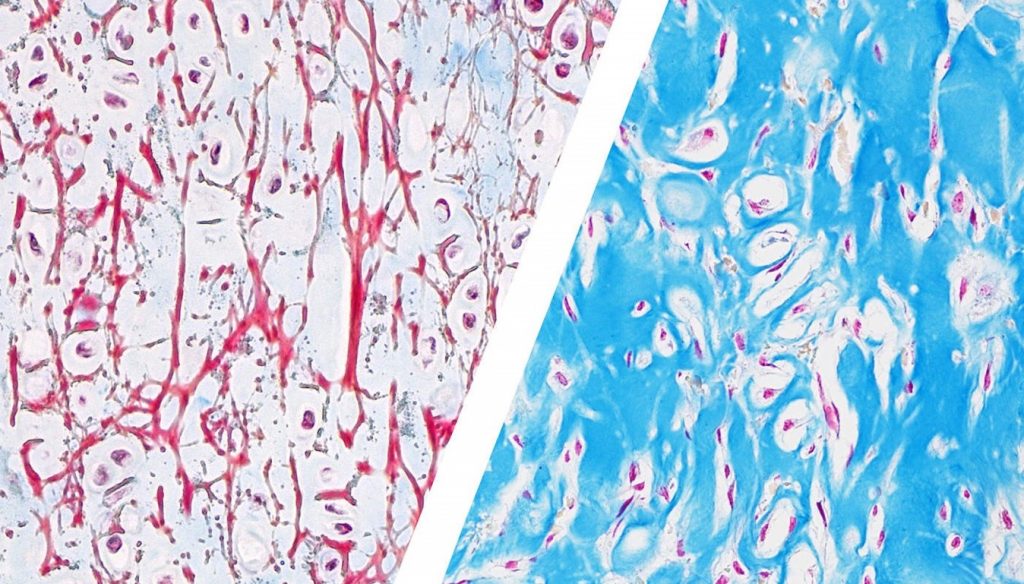
For the treatment of articular cartilage defects, autologous cells are implanted in combination with a scaffold material which not only provides structural support but also effectively guides cellular behavior and influences the quality of the resulting matrix. Yet, studies have shown that biomaterials currently in clinical use do not mimic the architecture and composition of hyaline cartilage.
Cartilage itself would pose the most homologous defect filling material, however sources within the patient are rare and donor tissue requires decellularization and subsequent revitalization with host cells. The latter has remained an unsolved challenge for years, as the densely packed collagen fibers prevent cells from entering the scaffold.
In a recent study, published in ACTA Biomaterialia, scientists from the Ludwig Boltzmann Institute for Experimental and Clinical Traumatology succeeded in the first homogenous recellularization of cartilage with an intact collagen structure. Instead of hyaline cartilage, they used auricular cartilage of bovine origin. Besides collagen and proteoglycans, auricular cartilage also contains elastic fibers which are not present in hyaline cartilage. The enzymatic depletion of those elastic fibers leaves a channel network in their place, giving the cells access to areas deep inside the scaffold. In an artificial defect model the formation of de-novo cartilage matrix with hyaline characteristics could be demonstrated.
The study was supported by the Austrian Research Promotion Agency FFG. The auricular cartilage material used for scaffold production was kindly provided by Fleischhauerei Silmbroth, a traditional butcher’s shop exclusively obtaining cattle from local farmers in Upper Austria.